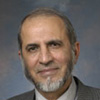 David Arnow
Jewish
David Arnow
Jewish
A central tenet of Judaism holds that at Mt. Sinai, God revealed the Torah to Moses that included the foundation of Jewish law. According to the book of Leviticus, “These are the laws, the regulations, and the instructions that Yhvh gave between himself and the Children of Israel at Mount Sinai, by the hand of Moses” (26:46, Fox). Clear as this may seem, the extent and legal content of this revelation has remained in dispute for millennia. Heschel describes a maximalist and minimalist school dating back to the first and second centuries C.E.
The maximalist view interpreted this verse to teach “that the Torah was given, with its laws, minutiae, and interpretations through the hand of Moses at Sinai.”* The minimalist school argued that the legal content of the revelation included only 13 principles of interpreting scripture. As one scholar observed, “the maximalist approach is about discovery of religious laws and truths already given; the minimalist school is about construction, or even invention, of religious laws and truths out of materials previously given.” * (The distinction is not unlike that between strict and loose constructionist approaches to interpreting the Constitution.) Heschel himself went so far as to say that, “As a report about revelation the Bible itself is a midrash.” *
The Talmud relates a story that often comes up in discussions about the relationship between divine revelation and Jewish law. The story features two of the greatest sages of the first and second centuries C.E., Rabbi Eliezer and Rabbi Joshua. (Both of these sages appear in the Haggadah). They disagree about whether an oven is clean, i.e., meets the proper standards of ritual purity. To prove that it is clean, Rabbi Eliezer calls on God to perform one miracle after another — a river changes course, a tree moves from here to there, etc. Rabbi Joshua argues that such miracles have no bearing on a court of law. Finally the voice of God calls out, saying, “Don’t you know that Jewish law always follows the view of Rabbi Eliezer?” To which Rabbi Joshua replies — citing scripture against God! — “It [Torah] is not in heaven (Deuteronomy 30:12). The members of the court side with Rabbi Joshua. The Talmud explains that following the revelation at Sinai we don’t heed the heavenly voice and besides the Torah also says, “After the majority one must incline” (Exodus 33:2). The punch line comes when Elijah the Prophet reports God’s reactions to the proceedings. God laughs and says, “My children have defeated me.”* Human beings are the essential medium through which divine revelation is refracted into Jewish law.
 Mary C. Boys
Christian
Mary C. Boys
Christian
We do not, of course, all agree within our communities, let alone among the various Christian traditions, about how norms derived from Scripture and from the church’s experience over time should be formulated, interpreted and adjudicated. Each ecclesial body works out its own interpretation.
Deriving norms from ancient texts is a complicated process. For instance, as Clarice Martin shows, African Americans over the generations have passionately rejected as contrary to the Gospel the exhortation that slaves should submit to their masters in the “Household Codes” of three New Testament letters (Colossians 3:18—4:1, Ephesians 5:21—6:9 and 1 Peter 2:18—3:7). Yet they have accepted in literalistic fashion the admonition that wives should submit to their husbands.* “How can a Black preacher,” Jacquelyn Grant asks, “preach in a way which advocates St. Paul’s dictum concerning women while ignoring or repudiating his dictum concerning slaves?”* Or more broadly, how can black male preachers and theologians use a “liberated hermeneutic” in speaking about slavery, but a “literalist hermeneutic” with reference to women?* We may pose a similar query in regard to the New Testament’s treatment of Jews. How can preachers and teachers today use a “liberated hermeneutic” to interpret texts about women but a “literalistic hermeneutic” to render texts that depict Jews in negative fashion? How can they continue to preach about the Pharisees as hypocrites or suggest that “the presence of Jesus is the epiphany of this new and different God—not a God of fear and punishment, distant from us and delighting in sacrifices but instead a God who is close.”* It is crucial to situate texts in their historical and literary contexts in conversation with the church’s historical traditions.
New Testament scholar Sandra Schneiders’s work offers intriguing possibilities for thinking about the relation of norms to Scripture. Her notion of “developing historical consciousness” widens the horizon in which to interpret revelatory texts.* She argues: Texts can come to mean something different from what they originally meant or were understood to mean because of their surplus of meaning and the character of effective history. For instance, the Declaration of Independence affirmed that “all men are created equal,” by which its eighteenth-century authors meant white, adult, property-owning males. When it was written, the term “men” was a generic term referring to all human beings. Although the framers of the Declaration did not intend to include women, children and slaves in the phrase, the text permits us to read “men” as human beings. Further, in the expanding effective historical consciousness of the American people, greater awareness has arisen about what humanity entails. We have come to understand “all men are created equal” to mean that all people possess equal rights. The words of the Declaration of Independence have not changed, but the text has insofar as its textual meaning has expanded.*
So too with the biblical text. The meaning of Second Testament texts about Pharisees or “the Jews” or the old covenant or the ordination of women or homosexuality is not restricted to what its first-century authors intended to say. Through our developing historical consciousness—and a deepening grasp of the Gospel we have been painfully slow to live—we Christians now have a clearer vision of the moral unacceptability of such texts, just as we do with texts presuming the legitimacy of slavery and patriarchy.
 Muhammad Shafiq
Muslim
Muhammad Shafiq
Muslim
The Qur’an in Islam is the Divine will of God, but it is not a book of law. It is a book of principles and guidance for humanity from which the rules of religious law are derived. The Qur’an was revealed to Prophet Muhammad (peace be upon him) and he was guided by God to explain the revelation to the people. His life is considered as the living Qur’an and all his actions, sayings and approvals are in a collection called called the Hadith. Therefore, the Qur’an and Hadith are the two authentic sources of the religious law in Islam.
Shari`ah is the Divine will of God in the Qur’an and the Sunnah (sayings, deeds and approvals) of the Prophet Muhammad (peace be upon him) as collected in the Hadith. Fiqh (Islamic Jurisprudence) consists of Ijma`(consensus of the scholars or of the community on legal issues), Qiyas (analogy) and Ijtihad (a juridical opinion to interpret or to reach a proper decision in legal matters). Fiqh is the human understanding of the divine will and expansion of Shari`ah. Fiqh deals with all aspects of Shari`ah, beliefs, worship, rituals, legal and moral issues. Fiqh interprets the guiding principles of Shari`ah, derives new rules and expands on the existing ones where necessary. In other words, Fiqh is a deep comprehension and interpretation of Shari`ah, and the experts of Islamic jurisprudence ( Faqih, pl. Fuqaha) expand on the comprehension of Shari`ah. Since there is no papacy or priesthood in Islam, jurists’ decisions vary on legal and religious matters.
Many schools of Islamic jurisprudence emerged in the medieval period of Islam. Among them, four Sunn — the Hanafi, the Maliki, Shafi`i and Hanbali — and one Shi`a, the Ja`fari school, spread into different parts of the Muslim world.
Note: Translation of the Qur’anic verses and many of the Hadith translation with references were taken from Islamicity.com; some translations of and references to the Hadith were taken from ahadith.co.uk.